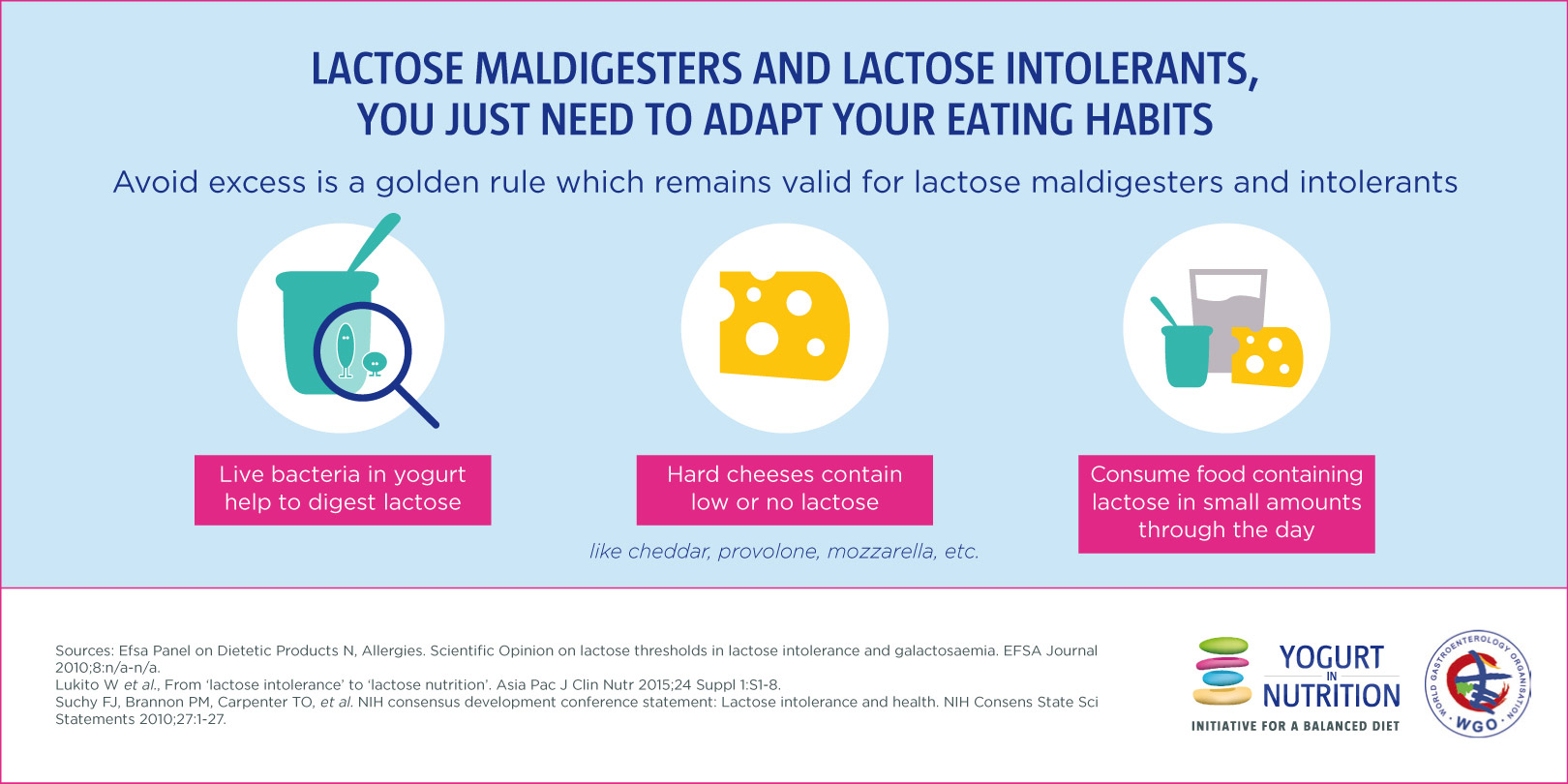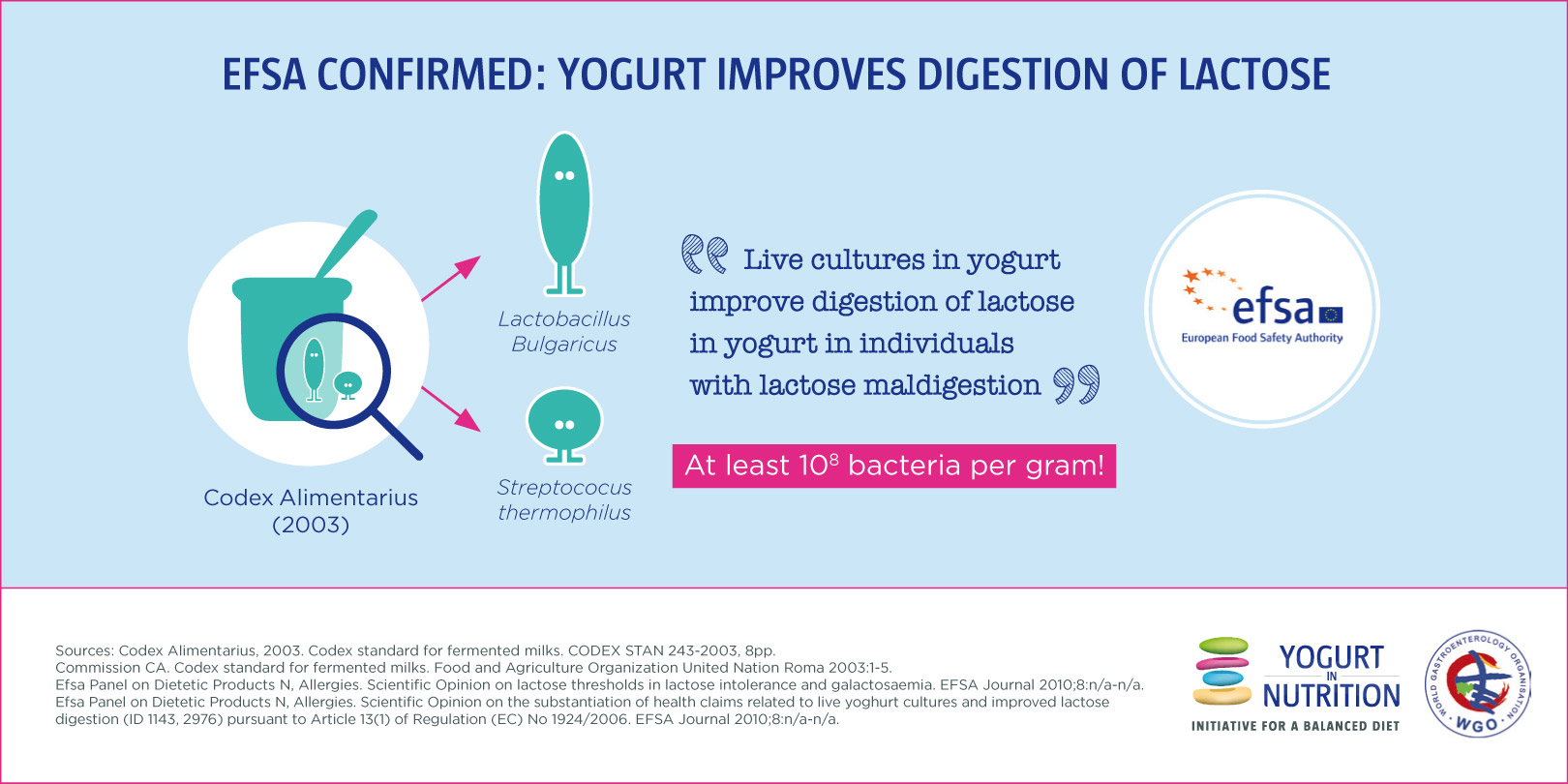Lactose intolerants don’t need to consume lactose-free food. Lactose-free food is only needed for the rare infants with congenital lactase deficiency, a genetic disorder characterized by the absence of lactase, the enzyme that transforms lactose. Lactose is the sugar naturally found in various amount in dairy products, such as milk, cream, yogurt and cheeses.
Lactose intolerance is due to lactose maldigestion, i.e. the reduced capacity to digest lactose, which results into one or many symptoms such as bloating, diarrhea, and flatulence. Most of people with lactose maldigestion can consume dairy food without experiencing any symptoms. Lactose may be consumed in modest amounts, up to 12 g in one intake or up to 24 g, preferably in small amounts across the day, during or at the end of a meal (not at beginning), without symptoms. They are also encouraged to consume altered forms of dairy food such as some cheeses that contains low or no lactose (cheddar, provolone, mozzarella, Grana padano, etc.) and yogurt. Yogurt contains live bacteria that improve the digestion of lactose it contains in lactose maldigesters.
In addition, regular dairy food consumption by lactose maldigesters could lead to colonic adaptation by the gut microbiota (the microorganism population that lives in the digestive tract) and may allow them to consume more dairy foods.
Thus, avoiding dairy foods may not only be unnecessary to manage lactose intolerance, but it may also lead to nutrient shortcomings, which may result in adverse health effects such low calcium intake and poor bone health.






